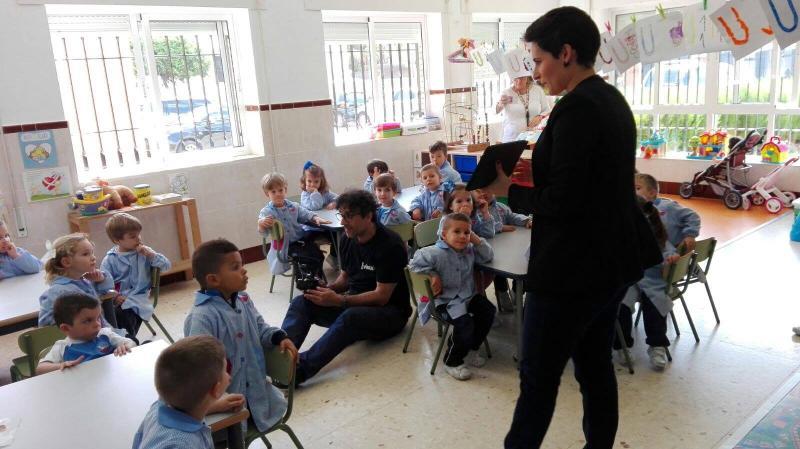Spanish NGO helps children learn with images in an increasingly visual online world
Miriam Reyes began her career as an architect, but became increasingly interested in education, particularly through the power of visual learning. Ninety per cent of the information we receive is visual, and the human brain processes images 60,000 times faster than text, she says. And plenty of studies show that visual learning makes a more enduring impression on memory.
In a world that is increasingly saturated with visual communication, Miriam wondered why schools weren’t doing more to teach children with images. She also wondered if a visual approach to education could further the goals of inclusion, so that children with learning difficulties could be part of the same classroom experience.
Her answer was to create Aprendices Visuales, or Visual Learning, a Seville-based non-profit organisation that she cofounded with Amélie Mariage in 2012. Aprendices Visuales has reached more than one million students with its books and apps, which are available in five languages. About 35 000 people have taken some training courses through the Aprendices Visuales online platform. The organisation won first prize in the 2016 Social Innovation Tournament, organised by the European Investment Bank Institute to promote creative responses to societal problems.
A complementary approach
The topic of visual learning so engaged Miriam that she is pursuing an advanced degree in education to help her understand how children are taught now and to refine Aprendices Visuales’ ideas. Miriam and Amélie began by creating image-rich books and digital apps to teach children everything from how to brush their teeth to understanding emotions and solving math problems. They created a website, put the curriculum online, and teachers introduced it in schools.

“Normally in school there’s a lot of verbal communication,” Miriam says. “What we are doing is adding a complement with visual tools that really help children learn faster. Each of the tools focusses on a different thing. For example, making them more autonomous, or helping them learn to read in a different way because they are seeing images and words in a complementary way”.
Part of the motivation of Aprendices Visuales has been to help children with learning difficulties or conditions like autism to learn more easily, and to be able to integrate in classrooms that include all students, Miriam says. Many children with autism, for example, are much more responsive to information provided visually.
“What we found out was that children were super happy and super focused and stayed connected with these books, because they could read even if they weren’t reading letters,” she says. “The teachers told us they were using the Aprendices Visuales curriculum as an inclusive tool, because it worked with all of the children”.
Transforming whole schools
Aprendices Visuales’ philosophy has been winning converts. Thirty schools in Spain have committed to adopting a comprehensive visual approach to education, not only in curriculum, but in things like the labels outside rooms (showing a picture of books outside the library, for example, or a group of teachers at a table outside the teachers’ lounge), and a visual daily schedule, showing activities by the hour.
Samuel Sánchez Forner, director of the CP El Bosquín school in the Asturias province of Spain, is a supporter of this approach. He has overseen the introduction of a visual curriculum and an inclusive approach to teaching all children. One of the first things the school did was to adapt the signage in the building, so that even children who couldn’t read yet could find their way easily.
Aprendices Visuales’ programme “has been an indispensable guide to signposting our centre, and it has represented the first step towards this transformation into an inclusive school,” he says.

Aprendices Visuales is a non-profit organisation, but it charges small fees for its training programmes. The online signposting training for a school costs €29, for example. The organisation has grants to pay for the trainings for schools or teachers who can’t afford them. Twenty books and apps are available free on the company’s website and, since the COVID-19 crisis began, the organisation has been trying to distribute its free materials as broadly as possible to help schools and parents dealing with remote learning.
Miriam says the next step for Aprendices Visuales is to expand its programme of helping schools use visual learning throughout their classrooms and buildings. “For us, sustainability and impact are at the centre of our approaches,” Miriam says. “At the end, what we see is a lot of children really need this transformation in their schools, and that’s what we’re focusing on.”
Miriam says visual learning is even more important as a tool now because of the digital revolution. Adults and children alike are bombarded with thousands of images every day through the devices in our pockets and on our desks. “These children are growing up in a society that is much more visual than it was 20 years ago,” Miriam says. “So the fact that they need these tools is not surprising. It’s their reality”.
